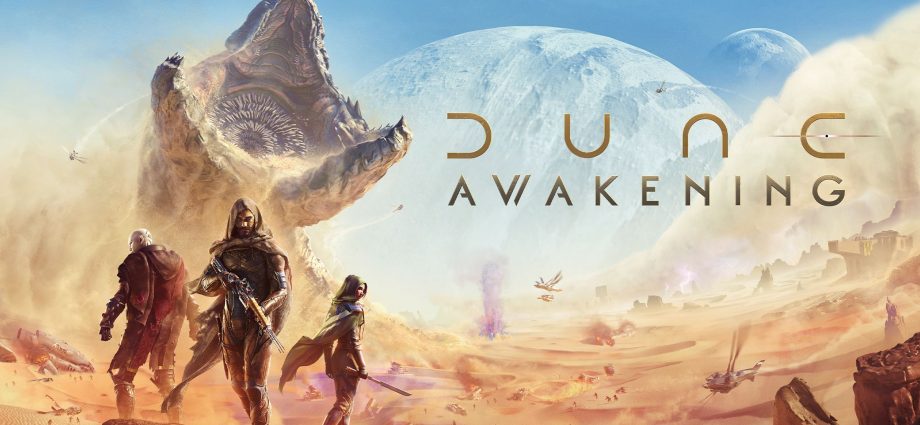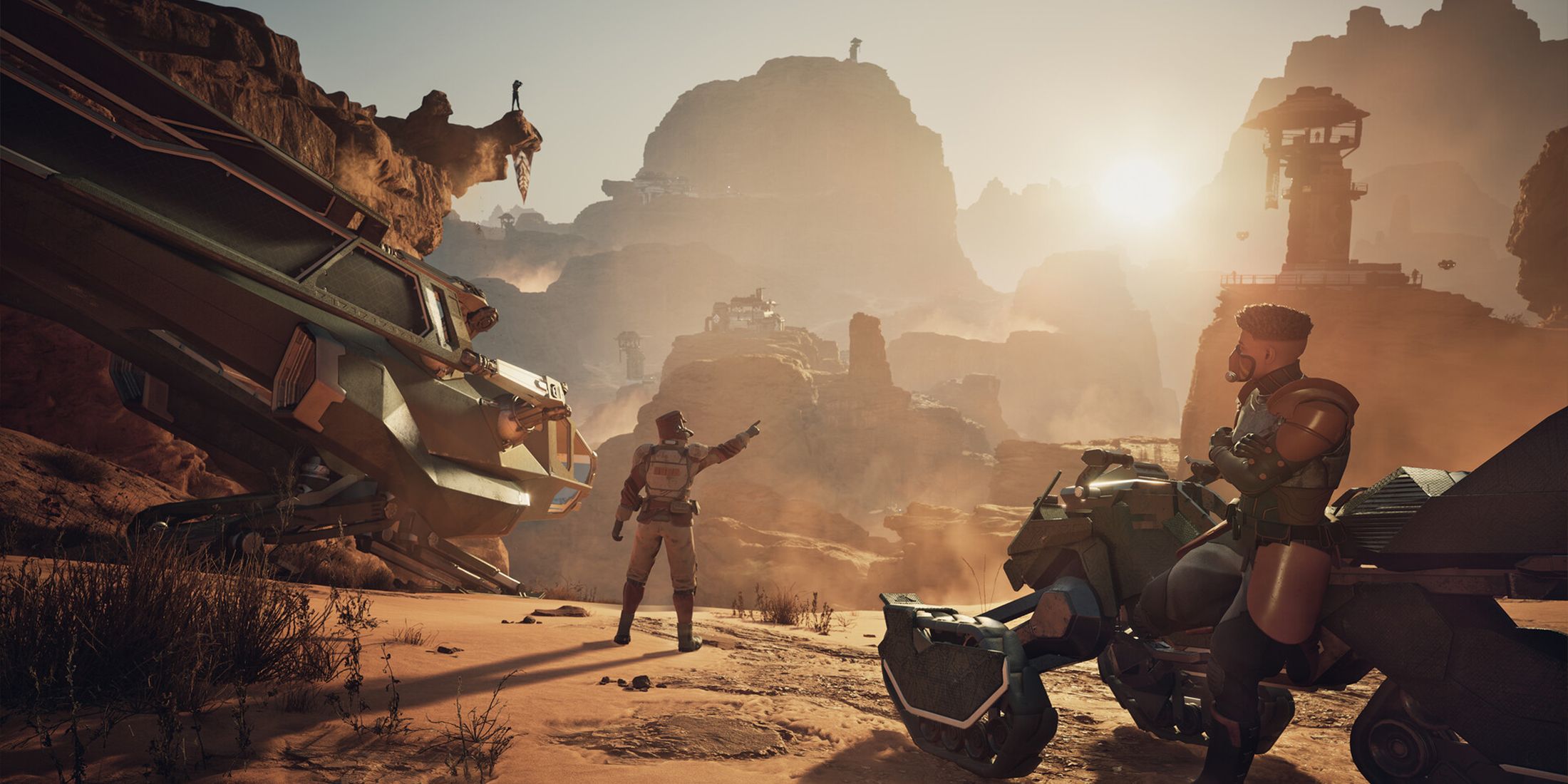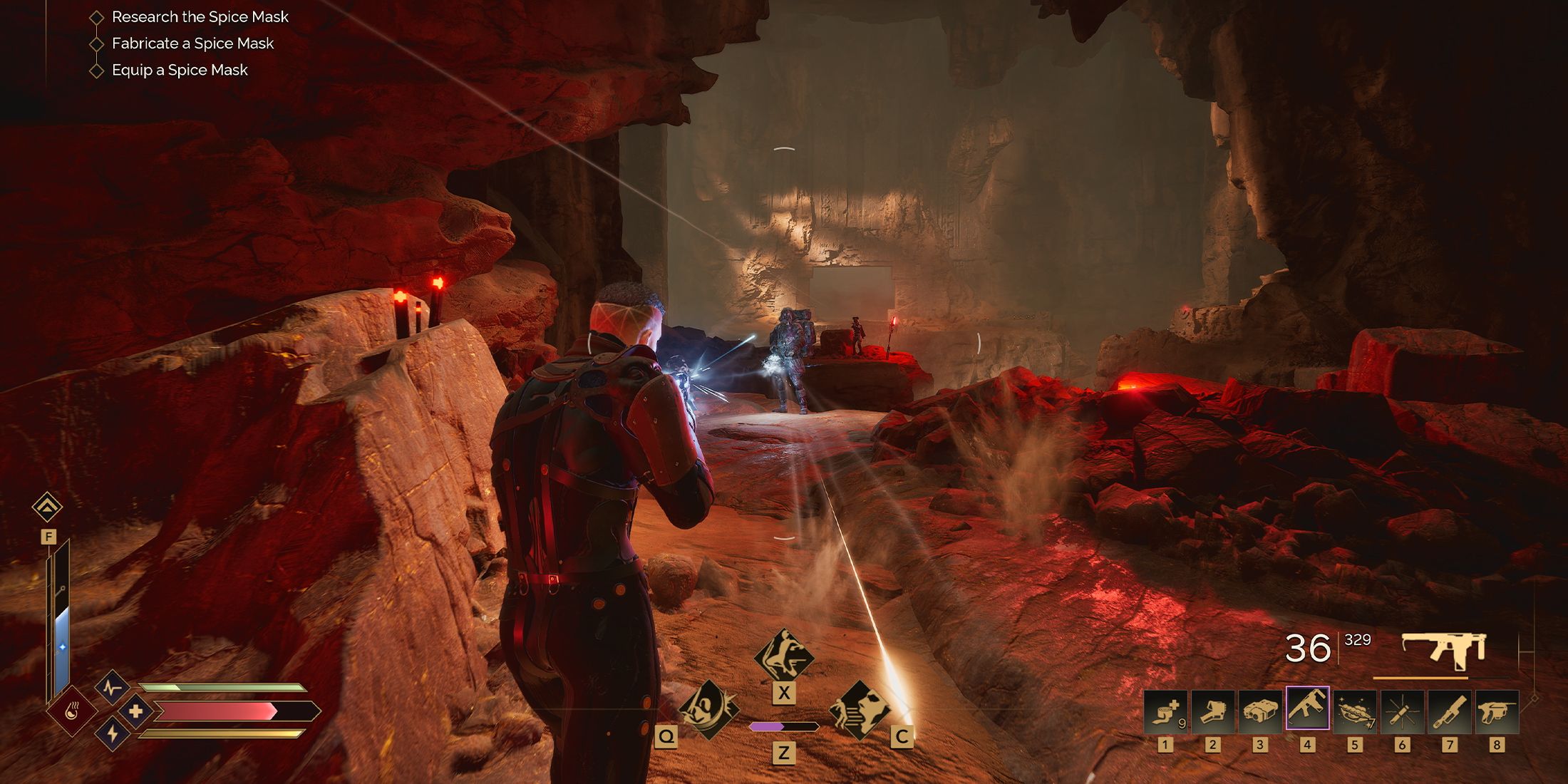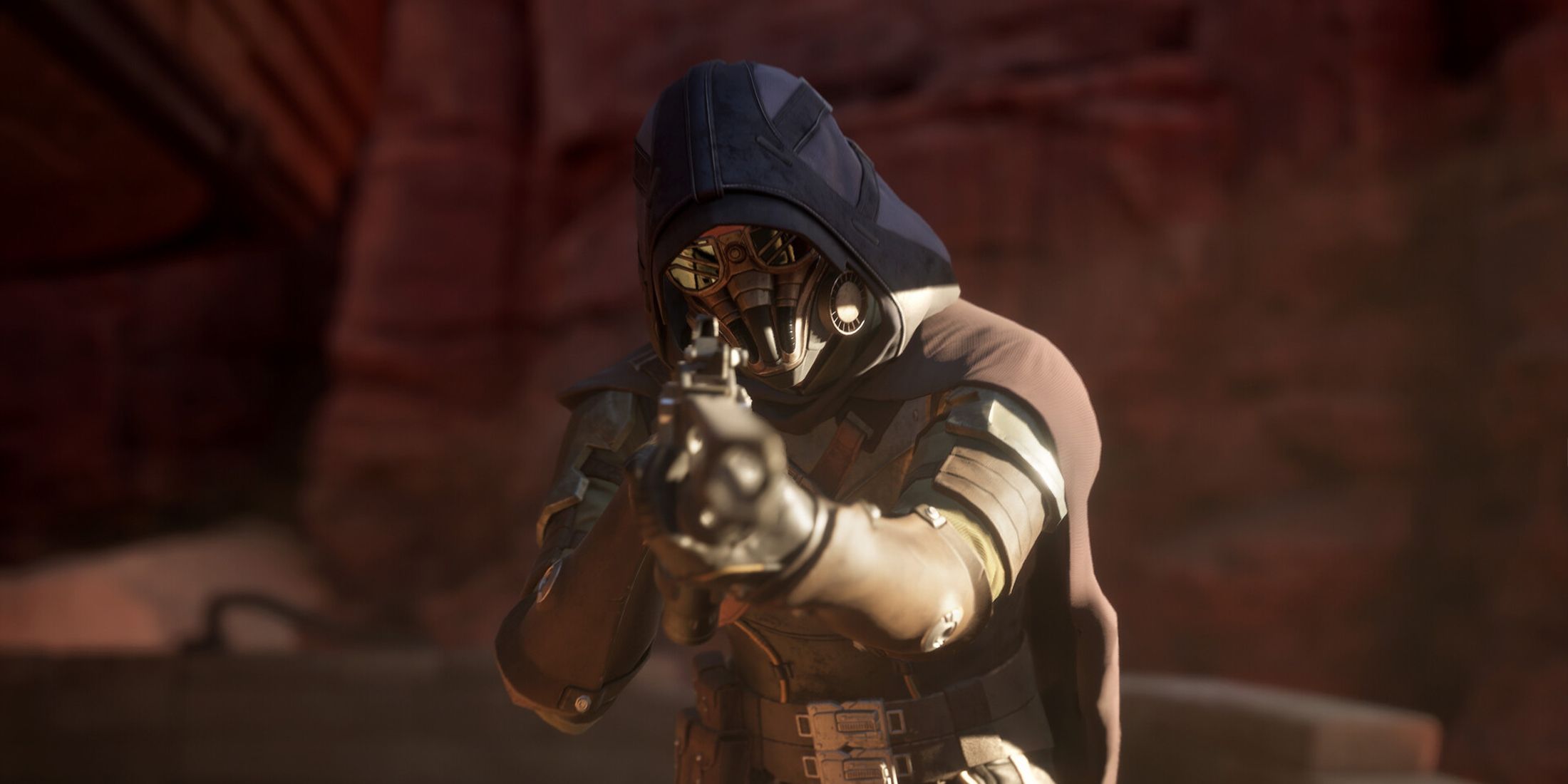Set on the legendary desert world of Arrakis, Dune: Awakening is Funcom’s new open‑world survival MMO with roots that dig deep into its genre and the IP it’s based on. As a Bene Gesserit agent dropped into an alternate timeline where Paul Atreides never existed, players are tasked with finding the missing Fremen and navigating a hostile environment shaped by brutal sandstorms, deadly sandworms, and the struggle for control over spice. In Dune: Awakening‘s persistent online world, survival boils down to players mastering the game’s harsh desert mechanics, crafting equipment and bases, forming alliances with factions, and competing in large‑scale PvE and PvP conflicts as part of an evolving narrative.
As an extension of a firmly established IP, Dune: Awakening has more elements it needs to nail that a traditional survival game simply wouldn’t. While it is indeed important that it offers a solid survival MMO experience, any shortcomings when it comes to how it presents the world of Dune are likely to be even more noticeable, especially considering the dedicated following the IP has built over the last six decades. As it turns out, that is the very thing that Dune: Awakening excels at the most, in addition to delivering a worthwhile survival MMO experience that may not bend the rules but doesn’t outright break them either.

Related
Best PC Settings For Dune Awakening
Dune Awakening allows players to adjust several graphical options to optimize performance to their liking, here are some recommended settings for PC.
Dune: Awakening’s Worldbuilding and Atmosphere Are Its Strongest Elements
If there’s one thing that Dune: Awakening does extremely well, it’s offering a world and atmosphere that are immersive and engrossing. It doesn’t really need to be said that Dune fans are bound to appreciate Dune: Awakening more than non-fans, but even those who have no prior experience with the books, movies, tv series, and general lore are still likely to find its world to be immensely satisfying to set foot in.
The expanse of Dune: Awakening‘s desert is fulfilling to explore, not just because of the material things players can find, but even more so because of how it all feels. Just like the IP it’s based on, Dune: Awakening is steeped in sci-fi motifs and imagery, and it’s backed by a soundtrack that complements it all perfectly. The only thing non-Dune fans might find a bit underwhelming is the game’s storytelling, which relies heavily enough on lore that it can be a bit confusing to follow for those not willing to log the research hours.
If there’s one thing that Dune: Awakening does extremely well, it’s offering a world and atmosphere that are immersive and engrossing.
The world is brought to life through movement, though not necessarily by Dune: Awakening‘s NPCs. Instead, the real stars of the show here are Arrakis’ deadly sandworms and the frequent Coriolis storms that roll through the area. There is nothing quite as terrifying as witnessing a sandworm erupting from the ground, roaring as a warning that you need to get off the open sand as quickly as possible, but that’s a massive part of what makes Dune: Awakening such an immersive experience — and the same could be said of Coriolis storms as well.
It’s not the scale of sandworms and storms in Dune: Awakening that make them truly frightening, however, but the consequences of succumbing to them. Getting eaten by a sandworm or killed by a Coriolis storm in Dune: Awakening will permanently strip players of the gear on their back and in their inventory, whereas dying in any other way at least grants them a chance to retrieve their equipment. The stunning visuals of these hazards are enough to strike terror into anyone, but knowing what they can accomplish makes them all the more horrifying to witness.
As the game progresses, players can even join factions in Dune: Awakening, which in turn allows it to fall even closer in line with Dune lore. Being in Atreides or Harkonnen determines which quests, blueprints, and base pieces players can access, and the Landsraad system allows guilds and players to vote on server-wide Decrees, weapon blueprints, and buffs based on faction performance. Gameplay elements aside, however, it all culminates in the immersive experience offered by Dune: Awakening.

Related
Dune Awakening Confirms Fan Requested Launch Feature, But There’s A Catch
Developer Funcom announces a popular feature is being added to the upcoming survival multiplayer Dune: Awakening, but there’s a catch.
Dune: Awakening Is a Solid if Grindy Survival MMO
Dune: Awakening’s Survival Mechanics Demand Attention
When it comes to how Dune: Awakening handles the survival MMO side of things, it mostly sticks to protocol. The typical gameplay loop players are familiar with in the survival-crafting genre is present throughout Dune: Awakening, seeing progression tied to players acquiring and making use of increasingly high tiers of crafting materials, completing fetch and kill quests for resources and funds, and managing survival mechanics in order to stay alive. It does take some liberty in how it interprets these elements to fit the world of Dune, but the core ideas are still there.
For example, players aren’t required to manage hunger and rest in Dune: Awakening, which is a breath of fresh air considering how demanding its other mechanics are. One of the game’s biggest bottlenecks is its hydration system, which complements Dune lore but is one of the most painful things to manage, especially early on. Once players become dehydrated in Dune: Awakening, their max health will continuously decrease until it eventually kills them if they don’t get a drink soon. There are multiple ways Dune: Awakening allows players to hydrate themselves, but it is nonetheless one of those things that should and will always be in the back of players’ minds while they attempt to complete other tasks.
Additionally, the game’s Sunstroke mechanics not only prevent players from using unique skills for a time, but they also work against movement speed, stamina recovery, and hydration by causing it to decrease at a much more rapid pace. The only way to prevent Sunstroke in Dune: Awakening is to stay in the shade or only go out at night, but it’s more than possible to get by during the day by moving from shadow to shadow.
Luckily, players can invest in the Sun Tolerance passive, which reduces Sunstroke buildup by up to 30% at max rank.
On top of that, there is the regular wear and tear that equipment and buildings go through, especially after a Coriolis storm passes through the area, and all of this is only remedied by either replacement or repair. Players might find themselves building a sandbike in Dune: Awakening‘s early game, only for a Coriolis storm to pass through and almost ruin it entirely. In short, Dune: Awakening doesn’t shy away from demanding survival mechanics, but it’s all part of what makes it a more immersive and fulfilling experience in the end.
Dune: Awakening’s Crafting Grind Is Deceptively Steep
As far as crafting in Dune: Awakening goes, things start out relatively simple and manageable even for casual players, as they often do in other games. For the most part, players can find everything they need to craft some good gear and build a base in Dune: Awakening within the game’s first couple of hours. However, by the time they reach the second and even third regions in the game, they’ll likely start to feel the true weight of its crafting grind.
In Dune: Awakening‘s mid-to-late game, resource acquisition is incredibly grindy, especially for solo players. As they advance through the game’s many tech tiers, the resources necessary for crafting even the most standard objects increase significantly in number, and it’s a pain that can be felt even when with a team of players all doing it together. At the moment, it feels a bit unbalanced in my opinion, and I don’t think I’m alone in that. However, for longevity’s sake, Dune: Awakening might choose to keep it in its current state, and perhaps understandably so.
Fortunately, Dune: Awakening‘s crafting grind doesn’t make it any less fun, and that’s largely due to the game’s stellar worldbuilding. It’s always a pleasure to travel through this alternate version of Arrakis in search of the next best thing when it comes to crafting materials, if not just to experience the game’s stellar atmosphere. Rather than giving players days-worth of fun, Dune: Awakening opts for a grind that makes it all about potentially spending months doing whatever it takes to earn that fun.

Related
How Do June 2025’s Game Releases Compare to 2024’s?
Last June brought gamers plenty of great options, but this year’s June lineup is filled to the brim with major title releases.
Dune: Awakening Thrives on Player Expression But Stumbles in Combat
Dune: Awakening Truly Allows Players to Be Themselves
If there’s one thing most survival-crafting enthusiasts look for in a game like Dune: Awakening, it’s freedom to express themselves in multiple ways. Fortunately, this particular title does a great job of that, from the minute players create a new character to the moment they begin building their first base. For a survival MMO, Dune: Awakening‘s character creator is extensive, offering players plenty of options to curate their character’s appearance to their liking. It’s not quite Bethesda caliber, but it arguably doesn’t need to be.
Once they’ve decided on their character’s appearance, players are asked to choose their home planet, caste, and mentor from a small selection in each category. These narrative selections influence starting abilities, dialogue, potential perks, and mentor-specific access, giving players even more opportunity to be unique in the world of Dune: Awakening. What I enjoyed most about these options, however, is that they refrain from outright explaining the gameplay benefits tied to each option, meaning it mainly centers around lore and is therefore more about immersion than sheer gameplay.
Obviously, with character creation options like these that are primarily tied to lore, Dune: Awakening is going to appeal more to fans of Dune who are familiar with the universe, but it should still serve as an effective way for newcomers to grow more acquainted with the IP’s lore.
Aside from Dune: Awakening‘s character creation, players can express themselves in their vehicles and bases as well. Dune: Awakening‘s base building, in particular, is one of the more extensive systems I’ve seen in the survival-crafting genre, as well as one of the more polished. It’s fairly easy to create exactly what you see in your mind, not only due to the sheer number of building options that are available, but also thanks to the lack of kinks in the system. It’s reminiscent of Fallout 76‘s C.A.M.P. building, in a way, as there are also plenty of decorations available for even deeper personalization.
Dune: Awakening’s Combat Is Passable, But Also Unbalanced and Unreliable
Dune: Awakening‘s combat, on the other hand, isn’t as much of a high point. To be fair, it is passable, as it does the job of breaking up the core loop of resource gathering and survival. However, it nonetheless falls short of what seems to be its own ambition.
Depending on which path players choose during character creation, they’ll be given access to unique unlockable combat skills in Dune: Awakening, which is generally a great idea when it’s executed well. The issue with Dune: Awakening, though, is that its combat doesn’t respect all playstyles — particularly, melee. More or less, melee combat is Dune: Awakening‘s second child when it comes to playstyles, as the majority of enemies players will encounter are going to attack them from range, and there are limited ways to get the upper hand on them unless plyaers are willing to incur some damage while they attempt to close the gap.
At first, it seems like Dune: Awakening actually wants melee combat to be its focus, and that would actually make sense considering how well it fits into the world of Dune from a lore perspective, better than ranged combat would. Initially, players are taught melee combat techniques like dodging and parrying, as well as a Slowblade attack that is efficient for taking out shielded enemies in Dune: Awakening. Even with those techniques, however, Dune: Awakening still gives melee playstyles the short end of the stick, as most enemies favor ranged combat.
This also means that if Dune: Awakening puts melee combat at a disadvantage, it puts stealth gameplay on the bottom as well.
This unbalanced approach to combat and skill progression is accompanied by most combat scenarios feeling a bit clunky, especially when it comes to melee. By and large, combat in Dune: Awakening feels stiff, slow, and unrewarding, making enemies more annoying roadblocks than memorable, meaningful encounters. The best way to describe the overall combat experience in Dune: Awakening is that it has something closer to superficial, rather than actual, depth, where there are promises made that just aren’t met in the long run.

Related
How Dune: Awakening Tackles the Challenge of Arrakis as a Singular Setting
Dune: Awakening executive producer discusses the challenge of setting a survival game on Arrakis due to its uniform nature as a desert planet.
Dune: Awakening Is Polished With a Few Scratches That Need Buffing
When considering its scope, visuals, and online state, Dune: Awakening is a surprisingly polished experience. There are minimal bugs and graphical oddities, and it runs consistently and smoothly regardless of where you’re at in the world or what or how much is happening on the screen. Games like this are infamous for having numerous issues at launch, and these are all points of observation that were made before Dune: Awakening‘s full release.
That being said, when a glitch does occur, it can be rather immersion-breaking. Climbing in Dune: Awakening, for one thing, occasionally has its hiccups, especially when it comes to trying to climb onto a ledge from a wall. Clipping is another issue that can occur at times, potentially leading to players getting stuck in terrain or falling through it completely. They aren’t game-breaking bugs, by any means, especially considering Dune: Awakening has a built-in “unstuck” feature. Even so, it can momentarily break immersion.
Performance-wise, Dune: Awakening is pretty solid. I gave it a try on NVIDIA’s new RTX 5070 Ti with everything dialed up to max and multi frame generation turned on, and I was able to hit an average of nearly 250 FPS in 1080p, with lows landing closer to 200. Swapping to 4k, I had to switch DLSS to favor performance over quality, but even though that meant a downgrade in visuals, it also meant an average of close to 300 FPS.
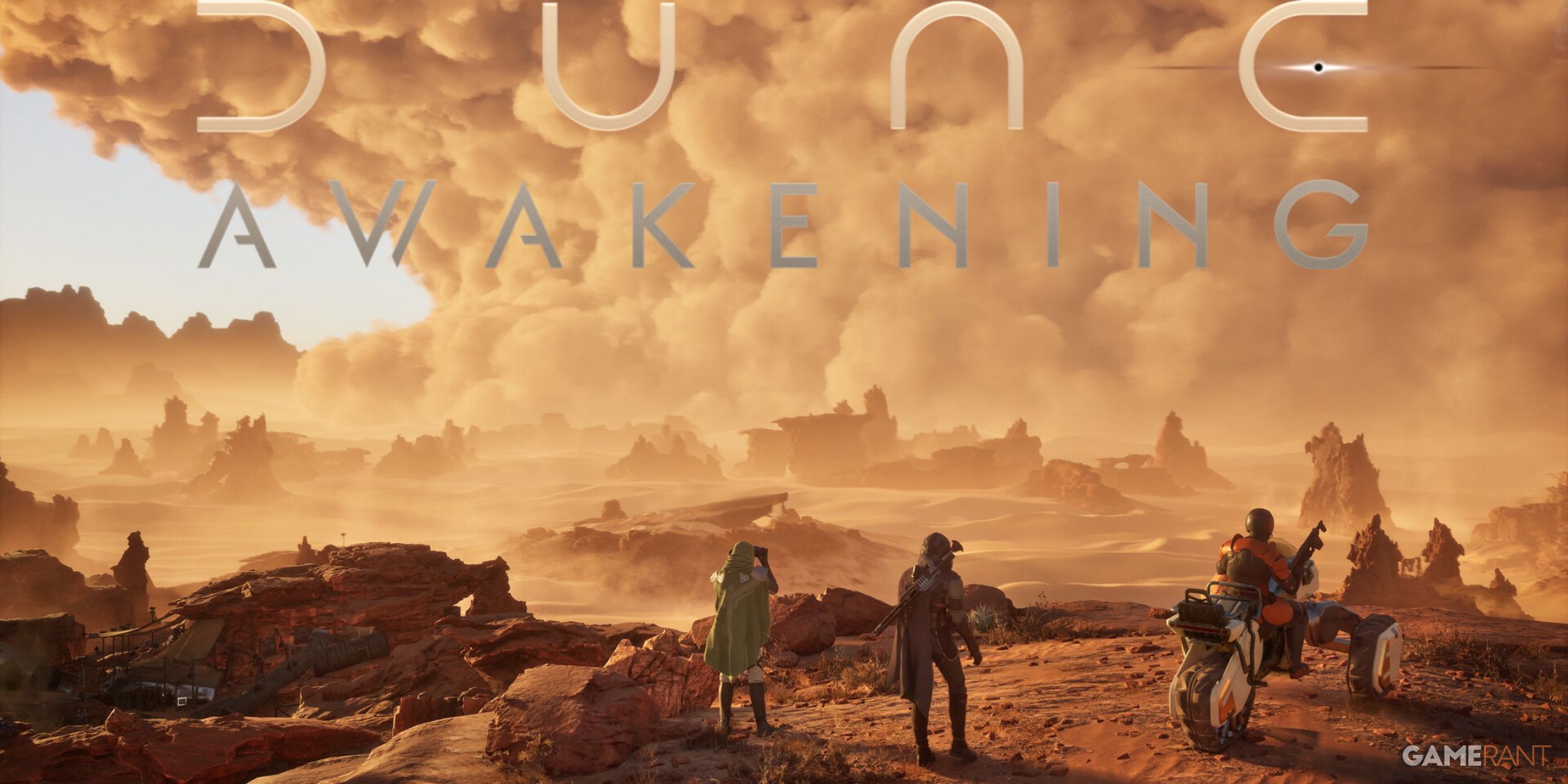
Related
How Dune: Awakening Spices Up Its Main Conflict
Dune: Awakening is using the IP to its full advantage, and that includes putting the franchise’s Spice front and center of its gameplay.
Dune: Awakening Review — Final Thoughts
Dune: Awakening gets a lot right when it comes to capturing the harshness and atmosphere of Dune‘s Arrakis. The survival systems are demanding, the world is immersive, and the overall presentation does a great job of honoring the source material without getting too lost in it. Even with its grindier moments, there’s still a clear sense of progress that keeps things moving, especially when you’re leaning into exploration, crafting, and faction play. It’s the kind of game that knows what it is and sticks to it, even if that means some players may bounce off the slower pace or the lore-heavy storytelling.
Where things start to come apart is in the combat, which never quite finds the same footing. Melee feels stiff, stealth is undercooked, and the flow of encounters doesn’t always match the scale or intensity the rest of the game sets up. But even with that in mind, there’s still something satisfying about building your own identity on a planet that feels as dangerous as it does alive. Dune: Awakening isn’t perfect, but it’s confident in its vision, and that makes all the difference.

- Immersive World and Atmosphere
- Strong Survival Mechanics
- Extensive Player Expression and Creative Options
- Solid Performance for an Online Game
- Stiff, Unbalanced Combat, Especially Melee
- Steep Grind in the Mid-to-Late Game
